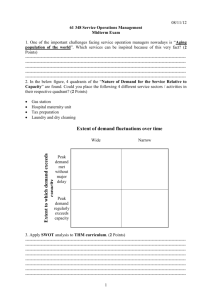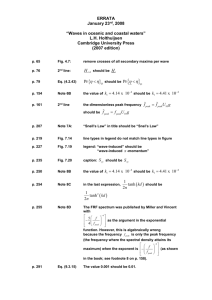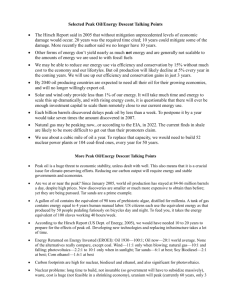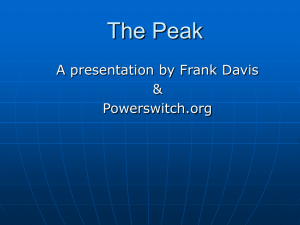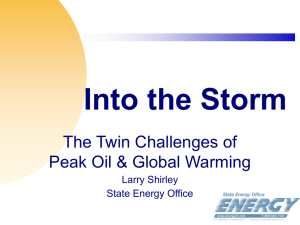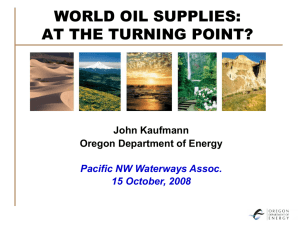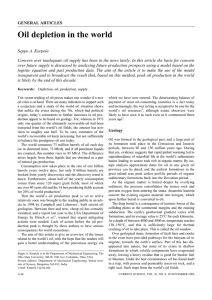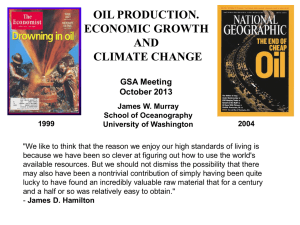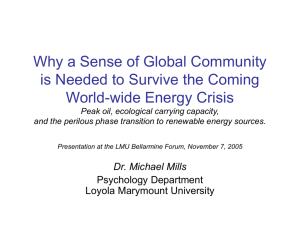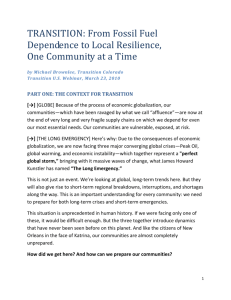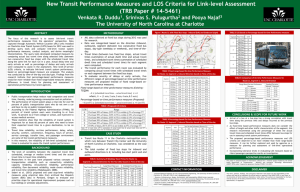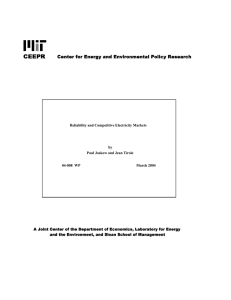Peak Oil
advertisement
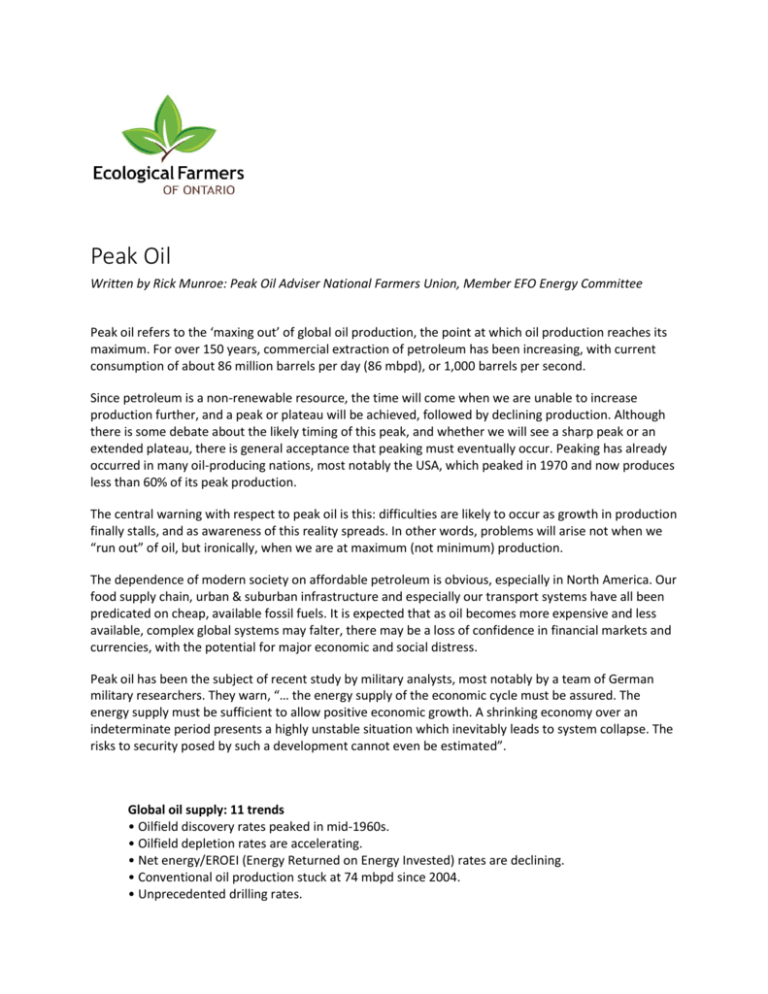
Peak Oil Written by Rick Munroe: Peak Oil Adviser National Farmers Union, Member EFO Energy Committee Peak oil refers to the ‘maxing out’ of global oil production, the point at which oil production reaches its maximum. For over 150 years, commercial extraction of petroleum has been increasing, with current consumption of about 86 million barrels per day (86 mbpd), or 1,000 barrels per second. Since petroleum is a non-renewable resource, the time will come when we are unable to increase production further, and a peak or plateau will be achieved, followed by declining production. Although there is some debate about the likely timing of this peak, and whether we will see a sharp peak or an extended plateau, there is general acceptance that peaking must eventually occur. Peaking has already occurred in many oil-producing nations, most notably the USA, which peaked in 1970 and now produces less than 60% of its peak production. The central warning with respect to peak oil is this: difficulties are likely to occur as growth in production finally stalls, and as awareness of this reality spreads. In other words, problems will arise not when we “run out” of oil, but ironically, when we are at maximum (not minimum) production. The dependence of modern society on affordable petroleum is obvious, especially in North America. Our food supply chain, urban & suburban infrastructure and especially our transport systems have all been predicated on cheap, available fossil fuels. It is expected that as oil becomes more expensive and less available, complex global systems may falter, there may be a loss of confidence in financial markets and currencies, with the potential for major economic and social distress. Peak oil has been the subject of recent study by military analysts, most notably by a team of German military researchers. They warn, “… the energy supply of the economic cycle must be assured. The energy supply must be sufficient to allow positive economic growth. A shrinking economy over an indeterminate period presents a highly unstable situation which inevitably leads to system collapse. The risks to security posed by such a development cannot even be estimated”. Global oil supply: 11 trends • Oilfield discovery rates peaked in mid-1960s. • Oilfield depletion rates are accelerating. • Net energy/EROEI (Energy Returned on Energy Invested) rates are declining. • Conventional oil production stuck at 74 mbpd since 2004. • Unprecedented drilling rates. • Increasing shift to off-shore & deep-water drilling (despite increasing environmental risks). • “Grey factor” (veterans retiring, just when technological challenges are increasing). • “Rust factor” (aging infrastructure). • Price volatility & increasing cost. • Export capacity will decline. • Growing demand (86 mbpd = 1,000 barrels per second). Some additional trends: • Increasing acceptance that the “easy oil” is nearly gone. • Increasing warnings of near-term oil supply crunch (2011- 2015). • Still no viable liquid fuel replacement. • Ongoing lack of awareness/concern by politicians, media, the public. • Ongoing denial by Natural Resources Canada (“There is no imminent peak oil challenge”). • Ongoing lack of research at Agriculture & Agri-food Canada, OMAFRA and USDA on the effects to the agri-food sector of “the end of cheap fossil fuels.” • Ongoing inaction on government plans for liquid fuel emergencies (30 years)




